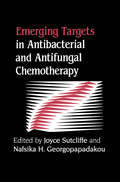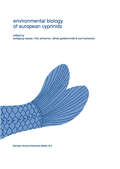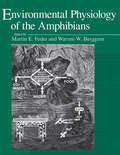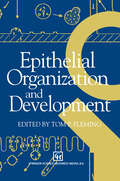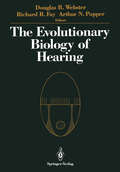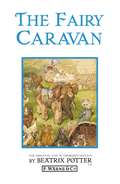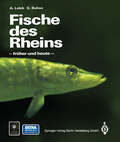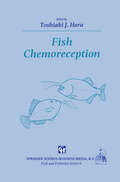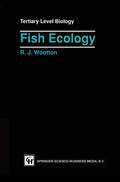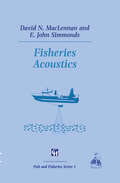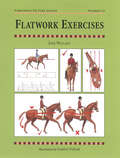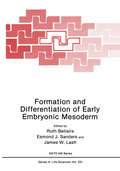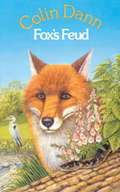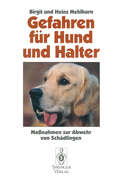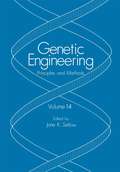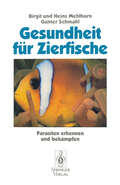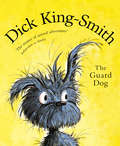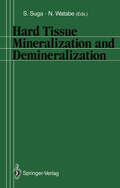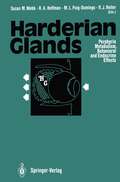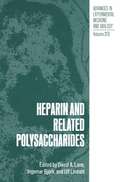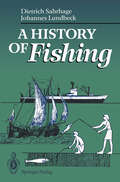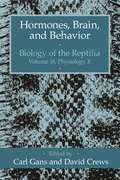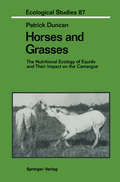- Table View
- List View
Emerging Targets in Antibacterial and Antifungal Chemotherapy
by Joyce Sutcliffe Nafsika GeorgopapadakouEmerging Targets in Antibacterial and Antifungal Chemotherapy offers constructive ideas to researchers that could lead to the discovery of entirely new classes of drugs. The authors emphasize new topics rather than review work on known antibacterials and antifungals, and identify new targets--either the rate-limiting component of a biochemical pathway or a component of the pathway that is susceptible to a ``screening'' or ``rational drug design'' approach. Each chapter reviews the biochemical pathway and its place in the cellular scheme in order to place the target in perspective. The authors, a mixture of academic researchers and drug-discovery investigators in pharmaceutical companies, also extend these theoretical concerns into practical applications and suggest useful screening methodologies. The importance of this subject area is demonstrated by the increasing number of papers in the literature that point to potential targets and screening methodologies for new antibacterials. This book also deals with antifungals, investigating the inherent limitations in existing antifungals (many of which are extremely toxic or have only limited efficacy), and pointing to major developments in the discovery of novel antifungals. Emerging Targets in Antibacterial and Antifungal Chemotherapy will be of interest to professional microbiologists, biochemists, and cell biologists in both academic and industrial laboratories.
Endothelial Cell Dysfunctions
by M. Simionescu N. SimionescuNoted experts survey and evaluate the latest research in the growing field of endothelial cell involvement in the initiation and development of various diseases. Research-oriented chapters span a diversity of topics, including endothelial cell response to various injuries and its crucial role in inflammation, immunity, viral infection, hypertension, hyperlipidemia, atherosclerosis, diabetes mellitus, neoplasia, and metastasis.
Environmental biology of European cyprinids: Papers from the workshop on ‘The Environmental Biology of Cyprinids’ held at the University of Salzburg, Austria, in September 1989 (Developments in Environmental Biology of Fishes #13)
by W. Wieser F. Schiemer A. Goldschmidt K. KotrschalEnvironmental Physiology of the Amphibians
by Martin E. Feder Warren W. BurggrenThrough its emphasis on recent research, its many summary tables, and its bibliography of more than 4,000 entries, this first modern, synthetic treatment of comparative amphibian environmental physiology emerges as the definitive reference for the field. Forty internationally respected experts review the primary data, examine current research trends, and identify productive avenues for future research.
Epithelial Organization and Development
by T. P. FlemingEpithelia are one of the commonest tissue types in the animal kingdom. Chapters from leading scientists in the major international research laboratories use examples from different systems to illustrate the form and function of epithelia. An important theme is the way in which epithelial cells differentiate to specialized tissue - reversal of this process occurs when cells become tumorigenic.
The Evolutionary Biology of Hearing
by W. N. TavolgaTo develop a science of hearing that is intellectu The five-day conference was held at the Mote ally satisfying we must first integrate the diverse, Marine Laboratory in Sarasota, Florida, May - extensive body of comparative research into an 24, 1990. The invited participants came from the evolutionary context. The need for this integra fields of comparative anatomy, physiology, biophys tion, and a conceptual framework in which it could ics, animal behavior, psychophysics, evolutionary be structured, were demonstrated in landmark biology, ontogeny, and paleontology. Before the papers by van Bergeijk in 1967 and Wever in 1974. conference, preliminary manuscripts of the invited However, not since 1965, when the American papers were distributed to all participants. This facilitated - even encouraged - discussions through Society of Zoologists sponsored an evolutionary conference entitled ''The Vertebrate Ear;' has there out the conference which could be called, among other things, "lively. " The preview of papers, along been a group effort to assemble and organize our current knowledge on the evolutionary-as with the free exchange of information and opinion, opposed to comparative-biology of hearing. also helped improve the quality and consistency of In the quarter century since that conference the final manuscripts included in this volume. there have been major changes in evolutionary In addition to the invited papers, several studies concepts (e. g. , punctuated equilibrium), in sys were presented as posters during evening sessions.
Excitation-Contraction Coupling in Skeletal, Cardiac, and Smooth Muscle (Advances in Experimental Medicine and Biology #311)
by George B. Frank C. Paul Bianchi Henk KeursThe Third International Symposium on Excitation-Contraction Coupling in Skeletal, Cardiac, and Smooth Muscle, organized by George Frank, C. Paul Bianchi, and Henk E. DJ. ter Keurs, was held in Banff Centre, Banff, Alberta, Canada during June 26 to June 30, 1991. The theme of these symposia has been to recognize the similarities and dissimilarities of excitation-contraction coupling in skeletal, cardiac, and smooth muscle. Cross fertilization of concepts of excitation-contraction coupling in these three types of muscle has occurred since the early studies in the late fifties and early sixties on skeletal muscle. Investigators in each field meet only at specialized symposia which exclude investigators in the other fields. The purpose of the symposia has been to bring together international investigators studying excitation-contraction coupling in skeletal, cardiac, and smooth muscle so that we may learn from each other and hence provide a more global concept of excitation-contraction. The Third International Symposia has accomplished its objective as we recognize that calcium channels of the sarcolemma and the sarcoplasmic reticulum play key essential roles in excitation-contraction coupling in all three types of muscles. In skeletal muscle the recognition that E-C coupling consists of two parallel mechanisms, one dependent upon a dihydropyridine voltage-sensitive sensors coupled to calcium release from the terminal cisternae via the ryanodine sensitive channel in the foot structure of the triad.
The Fairy Caravan
by Beatrix PotterTHE FAIRY CARAVAN is the story of a miniature circus, William and Alexander's Travelling Circus. It is no ordinary circus, for Alexander is a highland terrier and William is Pony Billy who draws the caravan. Beatrix Potter wrote this chapter book for older children towards the end of her writing career. She wrote it for her own pleasure and at the request of friends in America who shared her love of the Lake District and north country tales.
Fische des Rheins: — früher und heute —
by Anton Lelek Günter BuhseDer Rhein wird häufig als der schmutzigste Fluß Europas bezeichnet. Fest steht, daß er einen Wandel vom sauberen Lachsstrom zum beinahe "toten" Gewässer in den 70er Jahren hinter sich hat. Trotz aller Ereignisse war der Rhein niemals fischleer. Nach der Verbesserung der Wasserqualität Anfang der 80er Jahre hat sich der Fischbestand schnell erholt. Die Autoren wollen den Leser mit allen im Rhein lebenden Fischen vertraut machen. Dazu wurde der Rhein auf ganzer Länge, von Basel bis Emmerich, auf die vorhandenen Fischarten untersucht, und der heutige Bestand wurde mit den früher dort lebenden Fischgemeinschaften verglichen. Die wissenschaftliche Information ist so aufgearbeitet, daß sie jeder Laie verstehen kann. Die Fische werden beschrieben, in Zeichnungen und Farbbildern anschaulich gezeigt, ihre Lebensansprüche und ihre Verbreitung werden dargestellt. Gleichzeitig wird erklärt, warum bestimmte Fischarten relativ häufig vorkommen, andere aber völlig fehlen. Die Veränderungen und Belastungen des Flusses mit ihren Auswirkungen auf die Fischfauna sind chronologisch dargestellt; die Beschreibung des Ist-Zustands basiert auf umfangreichen Freilandarbeiten. Der Leser wird erkennen, daß der Fischbestand im Rhein den Zustand eines verbauten Flusses wiedergibt. Eine dauerhafte Erhaltung aller Fischarten wird nur mit Hilfe von ökotechnischen Maßnahmen, besonders im Bereich der Nebengewässer, der Flußauen und der einmündenden Zuflüsse möglich sein. Ein "Öko-Buch", nicht nur für Biologen oder Angler!
Fish Chemoreception (Fish & Fisheries Series #6)
by T. J. HaraThis book describes in general how the chemosensory systems of fish function at various levels. In many ways, fish are typical vertebrates differing only slightly from other vertebrates including humans. In other ways, their aquatic environment imposes strict requirements or offers unique opportunities which have resulted in some unusual functions having no counterpart in higher vertebrates. This new volume is necessitated by advances in many vital areas as the field of chemical senses continues to grow at a rapid pace. Most significant is the application of the contemporary electrophysiological technique of patch-clamping, recognition of a second messenger system in chemosensory transduction processes and the identification of hormonal pheromones in fish reproductive behaviour. The last major synthesis of our knowledge about fish chemoreception, Chemoreception in Fishes, was published ten years ago (Elsevier, Amsterdam, 1982). In that volume four aspects of fish chemoreception, Le. morphology of the peripheral chemoreceptors. primary sensory processes, roles in behaviour, and its interactions with environment, were discussed. This book is intended to be helpful to students, scientists and aquacul turists not only as a source book but also as a textbook on chemical senses.
Fish Ecology (Tertiary Level Biology)
by R. J. WoottonFishes live in a world that is unfamiliar to us. Although we may make or even more advanced brief visits to this other world using a snorkel, scuba diving equipment, we can never become a part of it. Yet, an understanding of fish ecology requires an awareness of the relationships between fishes and their environment. The purpose of this book is to introduce the ecology of fishes by describing the inter-relationships between fishes and the aquatic habitats they occupy. The book can be read in complementary ways. A sequential reading, chapter by chapter, covers the main themes of ecology, including habitat use, species interactions, migration, feeding, population dynamics and reproduction in relation to the major habitats occupied by fishes. An alternative reading selects a particular sort of habitat, such as rivers, and, by using the index and skipping from chapter to chapter, builds up a picture of the ecology of fishes living in that habitat. The text is written for advanced students. Its emphasis is on descriptive rather than quantitative ecology. It is assumed that the reader will be familiar with the basic biology of fishes, acquired from a text such as The Biology of Fishes (Bone and Marshall, 1982) also published in the Tertiary Level Biology series. I would like to thank Dr J. D. Fish and two anonymous reviewers who, within a tight time-schedule, tried to improve the text. Any mistakes and shortcomings are my contribution.
FLATWORK EXERCISES (Threshold Picture Guides #23)
by Jane WallaceProgressive schooling exercises to improve suppleness, balance, strength and agility, and to enhance the performance of horse and rider.
Formation and Differentiation of Early Embryonic Mesoderm (Nato Science Series A: #231)
by Ruth Bellairs Esmond J. Sanders James W. LashMesodenn is a key tissue in early development. It is involved in the differentiation of almost every organ in the body, not merely as a structural component, but as an active participant in the establishment of diverse cell types. All mesodenn is derived from ectoderm. Its appearance signals the start of a significant new phase in the development of the embryo. At this time all three genn layers are now present and myriad sequences of cell and tissue interactions begin to occur which will eventually give rise to the entire embryo. The control of the growth and differentiation of the mesoderm is critical for the production of a normal individual. Indeed, disturbance of the patterning of the mesoderm or of its interaction with other tissues plays a critical part in the fonnation of most congenital anomalies. The main focus of this book is therefore on the establishment, divergence and specialisation of mesodermal derivatives. The central role of the mesoderm in development has long been appreciated and a wide literature exists on its activity in certain specialised situations. Recently, however, an impetus to its study has been provided by new approaches opened up through biotechnological advances. Many of these advances are reflected in the reports in this volume. Scientists from various disciplines have become drawn to mesodermal tissues, and this volume may help them find a framework within which their work will fit.
Fox's Feud: "in The Grip Of Winter", "fox's Feud" And "fox Cub Bold" (The\farthing Wood Ser. #Vol. 3)
by Colin DannThe fox cub Dreamer has been killed in a vicious attack, and the animals n White Deer Park have no doubt who is responsible. The old fox Scarface, feeling his position threatened by the new arrivals, has lashed out savagely at a defenceless cub.Fox vows revenge. But are he and his young family a match for the formidable strength of Scarface and his clan? Yet again the animals must band together to avert disaster.
Gefahren für Hund und Halter: Maßnahmen zur Abwehr von Schädlingen
by Birgit Mehlhorn Heinz MehlhornDieses Buch wendet sich an interessierte Hundebesitzer und Hundeliebhaber. Anhand von Farbabbildungen, Schemata, Tafeln, einfachen Bestimmungsschl}sseln etc. werden die Fr}herkennung eines Parasitenbefalls, die Bek{mpfungs- und die Vorsichtsma~nahmen zur Selbsthilfe dargestellt. DerText ist allgemeinverst{ndlich und am}sant gestaltet.
Genetic Engineering: Principles and Methods (Genetic Engineering: Principles and Methods #14)
by Jane K. SetlowGesundheit für Zierfische: Parasiten erkennen und bekämpfen
by Birgit Mehlhorn Heinz Mehlhorn Günter SchmahlThe Guard Dog (PDF)
by Dick King-SmithThere are six puppies in the pet shop window; five posh pedigree puppies, and a scruffy little mongrel with a grand ambition - to be a guard dog. The other pups laugh at him. How can such a small, scruffy dog possibly expect to be bought to guard a home? Especially when his bark is the most horrible, earsplitting racket they have ever heard! Will the poor little guard dog be doomed to a lonely life in the Dogs' Home - or worse...?
Hard Tissue Mineralization and Demineralization
by Norimitsu Watabe Shoichi SugaComparative investigations of mineralization and demineralization mechanisms by leading researchers give a general perspective on this interdisciplinary field of the life sciences and an introduction to current research methods and concepts. The studies are concentrated in the areas of calcium phosphate mineral formation in vertebrate bone and teeth and calcium carbonate mineral formation in coral skeletons and molluscan shells.
Harderian Glands: Porphyrin Metabolism, Behavioral and Endocrine Effects
by Susan M. Webb Roger A. Hoffman Manuel L. Puig-Domingo Russel J. ReiterHarderian glands, first described by Jacob Harder in two species of deer in 1694, are large, intraorbital glands which, with but few exceptions, are found in all land vertebrates. Certainly, their relatively large size, their phylogenetic age, and persistent conservation in all groups as they emerged from an aqueous to an air/land environment lend strong support to the logical deduction that they probably play an important role in the physiological adaptation to terrestrial life. Yet, few biologists know even what or where these glands are. For a variety of reasons, the Harderian glands have not received the attention they deserve and, as a result, the published works available have been scarce and scattered throughout the world literature. The current situation is remarkably similar to that which existed in regard to the pineal gland prior to the mid-1960s, i. e. , scattered literature, unknown function, few investigators, and little interest. Yet, following a few key papers, interest in the pineal gland expanded and soon an explosive increase in the knowledge and understanding of the pineal gland took place and continues today. Will history repeat itself? Originally, a few of us discussed the desirability of an informal Symposium on the Harderian glands.
Heparin and Related Polysaccharides (Advances in Experimental Medicine and Biology #313)
by David A. Lane I. Björk Ulf LindahlThis volume is a record of a meeting entitled "Heparin and Related Polysaccharides" that was held at the Biomedical Center, Uppsala, Sweden between 1-6 September 1991. The meeting was hosted by U. Lindahl, L. Kjellen and I. Bjork, who were helped in their preparations by a scientific advisory panel that included U. Abildgaard, B. Casu, E. Holmer and D. Lane. Altogether, 230 participants from 18 countries attended the meeting, and most were present to be included in a photograph, which is to be found at the end of this volume. The selection of presentations for inclusion in the Symposia of the meeting was made on the basis of the known high quality of the work of the individuals or groups involved. This, we believe, is reflected in the contents of the enclosed articles, which collectively give a comprehensive overview of the present state of knowledge of heparin and related compounds. Some of the areas covered are evolving or controversial and the views expressed in each article should be regarded as those of the author(s). The authors have taken various amounts of care to define all their abbreviations and some familiarity with the different forms of nomenclature used in the fields of polysaccharide chemistry and of the coagulation proteinases and their inhibitors will assist the reader.
A History of Fishing
by Dietrich Sahrhage Johannes LundbeckDescribed here are the origin and general trends in the development of fishing from the earliest times up to the present in various parts of the world. The techniques applied and the economic and social problems involved are covered. Fishing methods have not changed much since the Stone Age, but continuous technical improvements like the construction of sea-worthy ships, more efficient gear, and finally mechanization of fishing have led to enormous development and a high fish production, of now 100 million tons per year. Extensive utilization has caused heavy overexploitation of the resources and consequently growing concern. The book concludes with an evaluation of perspectives for the future utilization of living resources.
Hormones, Brain, and Behavior (Biology of the Reptilia Series #18)
by Carl Gans David CrewsThis is the first volume to integrate information on ways in which the nervous and endocrine systems interact to mediate crucial aspects of reptile behavior. Although the authors pay particular attention to reproductive behavior, from initial recognition and evaluation of potential partners to decisions about reproduction, they also deal with other survival behaviors.
Horses and Grasses: The Nutritional Ecology of Equids and Their Impact on the Camargue (Ecological Studies #87)
by Patrick DuncanIn 1973, a herd of Camargue horses was released into a nature reserve in the Rhone delta of France. The comprehensive long-term study of the resulting population eruption provided the opportunity for a unique analysis of the feeding ecology of free-ranging horses. Horses and Grasses summarizes the study covering digestive physiology, behavior, growth, and demography of wild horses and zebras. It examines how these equids are affected by variations in abundance and quality of grasses and in turn, how grazing affects the plant communities. The book also provides insight into the consequences of the hind-gut fermentation system for equid behavior and ecology and contrasts this feeding strategy with that of the recently evolved, highly successful grazing bovids.
